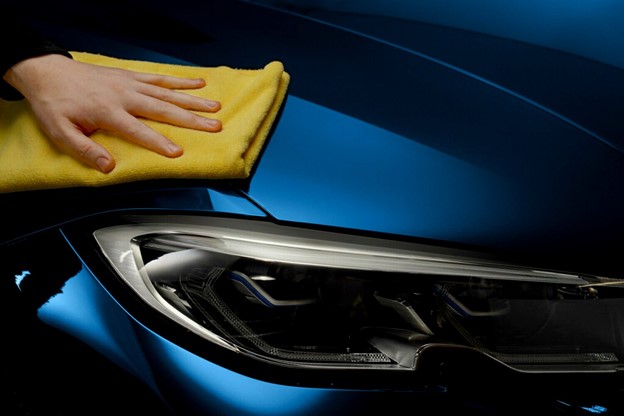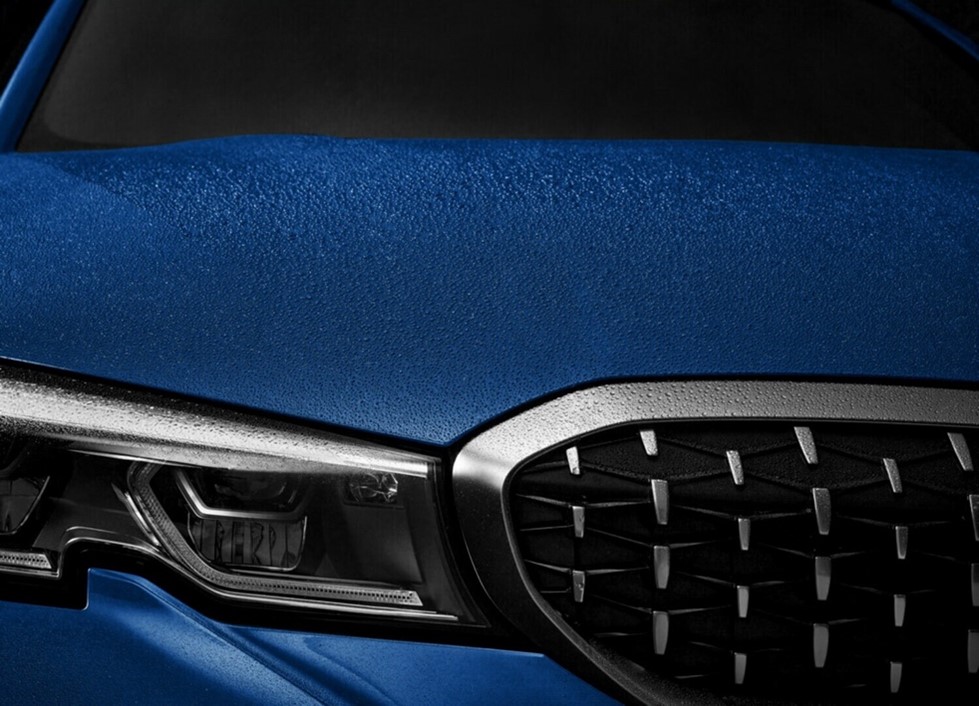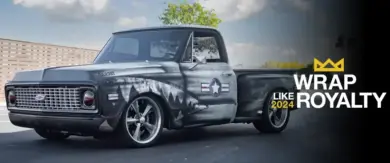
Can car wraps be washed or waxed? Can a protective coating be applied? Having these answers on hand ensures your customers understand the responsibility of caring for a vehicle wrap. Here are all the do’s and don’ts for maintaining vehicle graphics.
Handwashing
Handwashing is the safest way to care for your wrap and can be accomplished in three steps:
- Rinse off as much dirt and grit as possible with a spray of water.
- Using a wet, non-abrasive detergent and a soft, clean cloth or sponge, wash the wrap using a circular motion. A magic eraser and hot, soapy water go a long way in keeping your wrap in good condition. For those looking for a more sustainable option, biodegradable, non-abrasive cleaning products work too.
- Rinse thoroughly with clean water. To reduce water spots, immediately use a silicone squeegee to remove water and finish with a clean microfiber cloth.
Wraps should be washed a minimum of once a week or whenever the car appears dirty. Contaminants – tree sap, bug splatter, bird droppings, etc. – that remain on the wrap may be more difficult to remove during cleaning. Matte and satin wraps, in particular, should be washed regularly. These films are more porous and prone to dirt, debris which causes early degradation if not routinely cleaned.
Car washes
If handwashing is not an option, touchless carwashes may be used. Avoid brush and high-pressure car washes, as these may cause dulling, scratching, or lifting edges. If the film is matte, satin, or textured, a basic wash will do. For gloss films, select the deluxe option, which will apply a wax coating. Choosing this option for matte, satin, or textured films applies an unwanted sheen.
Like handwashing, take the time to wipe down the car with a microfiber cloth to prevent water spots. If you’re unable to wipe the wrap down after a car wash and notice water spots, use a magic eraser sponge with a combination of very hot water and a detergent. Apply in a circular motion. For difficult to remove contaminants, spot clean with a solution of hot detergent and water: dip a microfiber cloth in the solution and place on the difficult contaminates. Let it sit on the area for a few minutes to soften the debris before wiping it up with a magic eraser sponge. Follow this with an isopropyl alcohol wipe or rubbing alcohol mixed at 70% isopropyl alcohol with 30% water.
Pressure washing
Although handwashing is the preferred cleaning method, pressure washing may be used under these conditions:
- Ensure the water pressure is kept below 2,000 psi (14 MPa)
- Keep water temperature below 180 F (80 C)
- Use a spray nozzle with a 40-degree wide-angle spray pattern
- Keep the nozzle at least 1′ (300 mm) away from and perpendicular (at 90 degrees) to the graphic
Wax and protective coatings
Just like a traditional paint job, waxing can be an effective method for protection from extensive weathering. However, it is not the best option for all films. Because wax applies a sheen to film, it is not a suitable option for matte or satin films. Gloss films are a good choice for wax.

Be sure to avoid excess wax residue as this may cause water spots. For those looking for more protection, protective coatings provide an even higher level of durability. Protective coatings encapsulate the pores of the wrap and make the surface slick, so water and dirt don’t stick to it.
Store indoors or under a cover
Car wraps (just like paint) are degraded by prolonged exposure to sun and atmospheric pollutants, particularly on the horizontal surfaces such as a hood, trunk lid, and roof. Whenever possible, store in a garage or at least in a shaded area during the day. At night protect the car from dew or rain, which may contain acidic pollutants (a common problem in many large metropolitan areas). When a garage is not available, consider using a cloth car cover at night.
Care for car wraps like you would any fine paint finish. Wash regularly, consider a wax or protective coating, and store indoors or cover whenever possible. When proper maintenance is applied to wraps, they should hit their warranty period.




